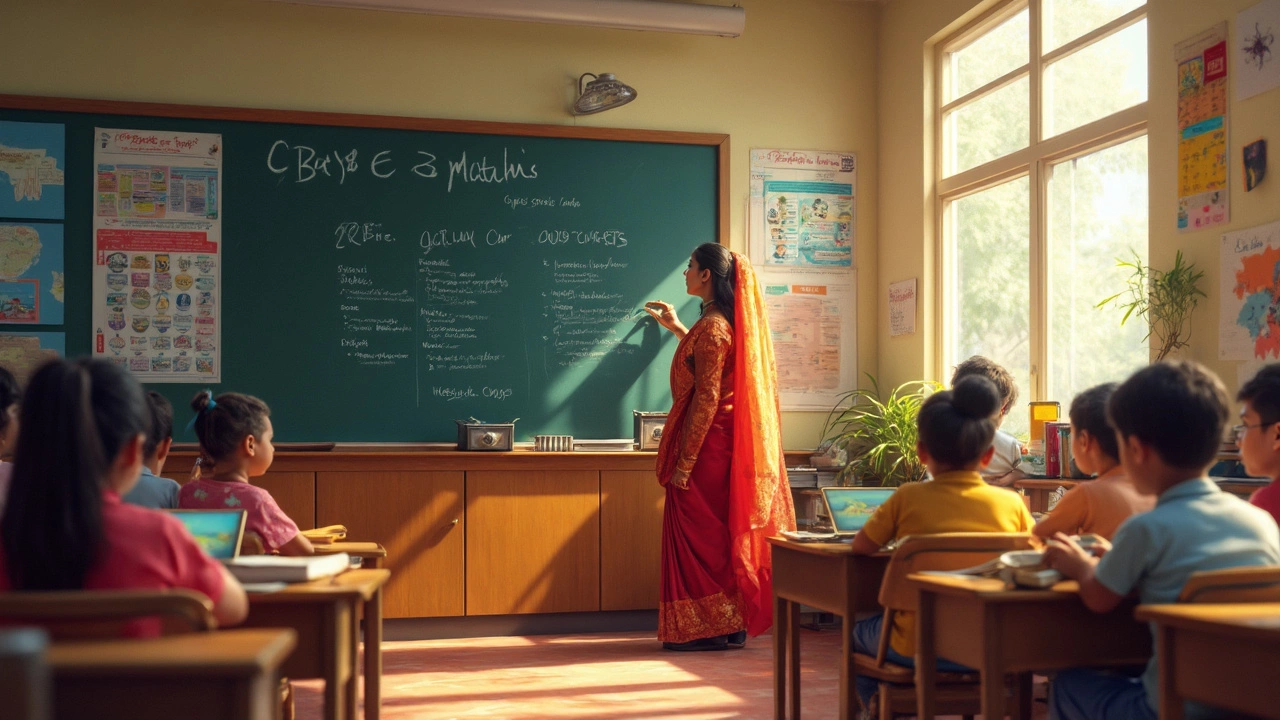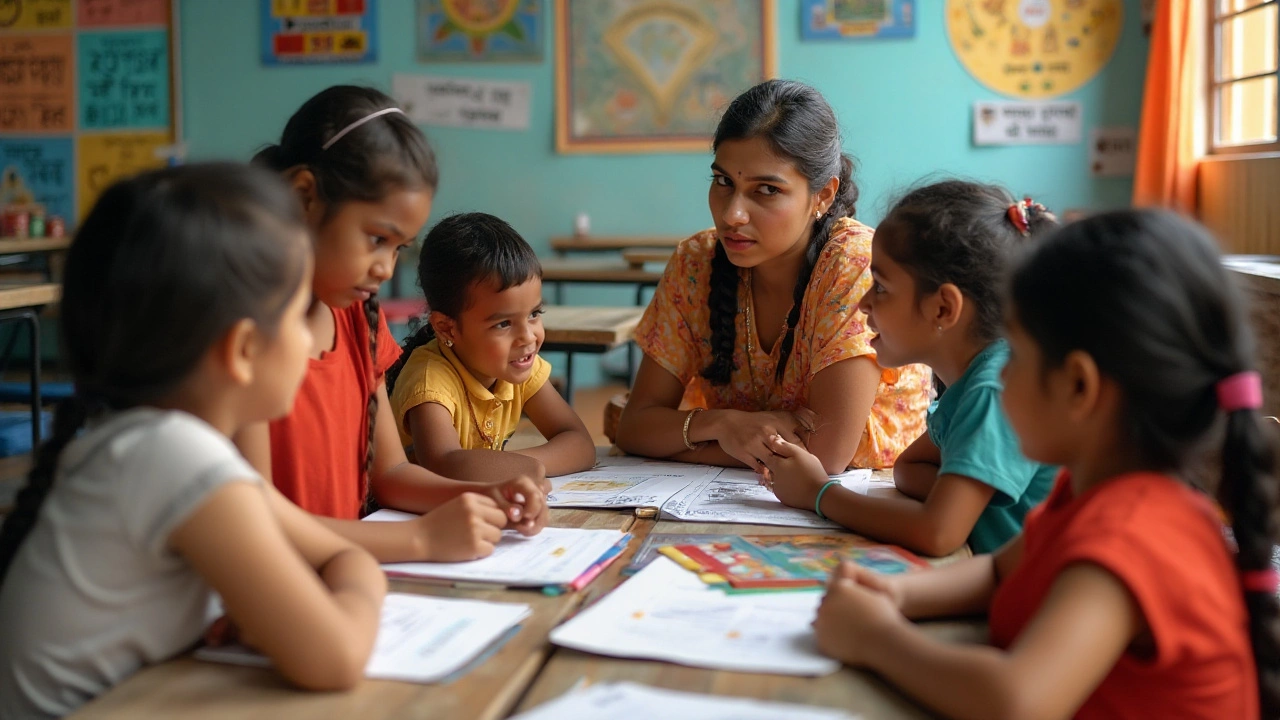CBSE syllabus: What you need to know now
If you’re a student, parent or teacher, the CBSE syllabus is the roadmap for every school year. It tells you which topics to study, how many marks each part carries and when exams happen. Knowing the syllabus helps you plan time, avoid last‑minute panic and focus on the right material.
Every year the Central Board of Secondary Education releases a fresh version for classes 1‑12. The changes are usually small – a new chapter here, a revised weightage there – but they can affect how you study. That’s why checking the official CBSE website before the academic year starts is a must.
Key features of the CBSE syllabus
First, the syllabus is divided by subject and class. For example, Class 10 Maths covers real numbers, algebra, geometry and statistics, while Class 12 Physics includes electrostatics, optics and modern physics.
Second, each chapter comes with suggested learning outcomes. These outcomes show what you should be able to do after finishing the topic – solve equations, draw diagrams or interpret data.
Third, the CBSE curriculum stresses practical work. Science subjects require lab experiments, and the syllabus lists the required equipment and safety steps.
Fourth, assessment criteria are built in. Internal assessments (periodic tests, projects) and the final board exam both follow the same weightage defined in the syllabus.
Finally, the syllabus promotes skill development. Critical thinking, problem solving and digital literacy appear as objectives across subjects.
How to stay updated and use the syllabus effectively
Start by downloading the PDF from the official CBSE portal. Save a copy on your phone and computer so you can refer to it anytime.
Mark the dates when the board releases the next syllabus – usually in October for the upcoming session. Set a calendar reminder.
Break the syllabus into weekly goals. If you have 30 chapters in a subject, allocate two weeks per chapter and leave buffer weeks for revision.
Use the learning outcomes as a checklist. After finishing a topic, ask yourself if you can meet every outcome – if not, revisit that part.
Combine textbook reading with the syllabus’s suggested activities. For science, perform the lab experiments listed; for languages, practice the writing prompts.
Join a study group or online forum where members share their progress against the syllabus. Discussing doubts early saves time later.
Keep an eye on any amendment notices. CBSE sometimes releases addenda after the main PDF, especially for new competitive exams.
Finally, treat the syllabus as a living document, not a static list. Adjust your study plan if you notice certain chapters need extra practice.
By following these steps you’ll stay ahead of the curve, reduce stress and boost your scores. The CBSE syllabus isn’t just paperwork – it’s a tool that, when used right, makes learning smoother and more focused.
Nov
21

- by Dhruv Ainsley
- 0 Comments
Is American Syllabus Easier Than CBSE? A Real Comparison
CBSE and American syllabi differ in structure, pressure, and goals. One isn't easier-it's just designed for different outcomes. Learn how each shapes learning and what works best for your future.
Oct
22

- by Dhruv Ainsley
- 0 Comments
Is India the Most Educated Country in the World? A Data‑Driven Look
Explore whether India tops global education rankings, understand key metrics, the impact of the CBSE syllabus, and how it compares to leading countries.
Jul
9

- by Dhruv Ainsley
- 0 Comments
Best World Syllabus: Comparing IB, CBSE, IGCSE, US Common Core, and More
Explore which school syllabus leads the pack worldwide. We dig deep into IB, CBSE, IGCSE, US Common Core and more, to reveal strengths, weaknesses, and real impact.
Jun
9

- by Dhruv Ainsley
- 0 Comments
CBSE Syllabus in India: What It Really Covers
The CBSE syllabus in India sets the framework for what millions of students learn from nursery to grade 12. This article breaks down what the syllabus includes, how it gets updated, and why it matters so much for exams and overall learning. You'll find tips on how to keep track of changes, understand core subjects, and plan for exams. It's your go-to guide for making sense of the CBSE curriculum, whether you're a student or a parent.
Apr
16

- by Dhruv Ainsley
- 0 Comments
Is the British or CBSE Curriculum the Better Choice?
Choosing between the British and CBSE curriculum can be tough for parents and students wanting the best education options. This article sheds light on the key differences, advantages, and considerations for both systems to help families make informed decisions. From teaching methods to global acceptance, we cover everything you need to know to choose the right path.
Dec
5

- by Dhruv Ainsley
- 0 Comments
Understanding CBSE Schools in India: A Comprehensive Guide
CBSE schools in India represent a significant portion of the educational landscape, known for their rigorous curriculum and nationwide presence. The Central Board of Secondary Education (CBSE) provides a standardized education across India, catering to students from primary to senior secondary levels. With a focus on holistic education and practical learning, CBSE schools aim to foster academic excellence and adaptability. This article delves into the structure, benefits, and unique features of CBSE schools, offering insights to parents and educators alike.